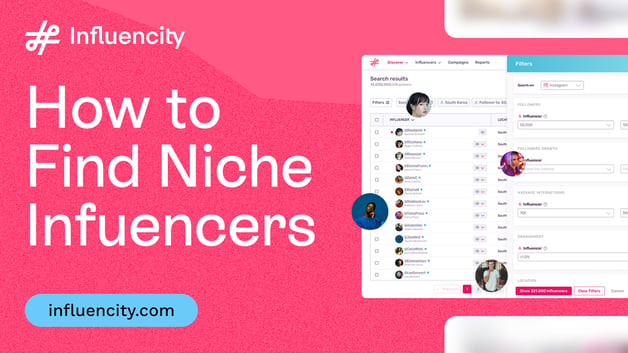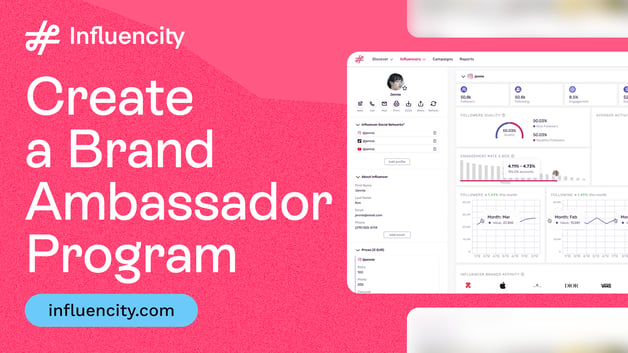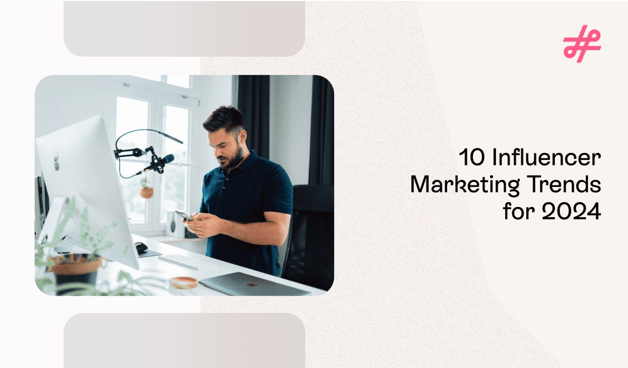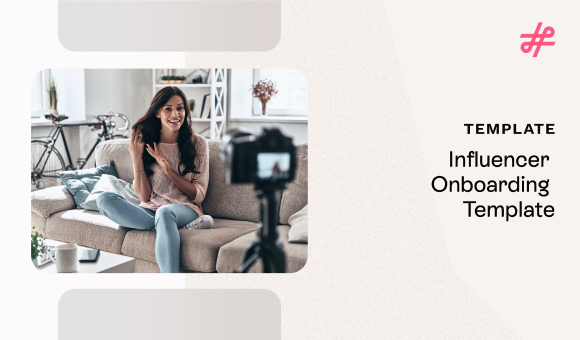Influencer Marketing
Battle of the Brands: How Coca-Cola and Pepsi Use Influencer Marketing to Compete
Influencer Marketing
When Brand Loyalty Meets Social Influence
If you’ve ever worked in marketing — or heck, just walked through a grocery store — you already know that Coca-Cola and Pepsi aren’t just soft drinks. They’re cultural icons. For decades, these two brands have waged one of the most legendary rivalries in marketing history. We’re talking full-blown Cola Wars: blind taste tests, Super Bowl ad showdowns, music megastars as brand ambassadors, and billions spent in traditional media.
But here’s the plot twist: we’re not in the era of big-budget TV spots and billboard dominance anymore. Today, attention lives in the scroll. Influence isn’t broadcast — it’s personal. And more and more, the decision of which cola ends up in your cart isn’t made by a commercial — it’s made by a trusted voice on your phone screen.
Welcome to the new frontline of the Cola Wars: influencer marketing.
As someone who’s spent years in the influencer marketing scene, I’ve watched this shift unfold in real time. Brands like Coca-Cola and Pepsi, once the titans of TV, are now battling it out on TikTok, Instagram, and YouTube — not just for reach, but for relevance. And what’s fascinating is how differently they approach it.
Coca-Cola leans into culture — partnering with global musicians, K-pop stars, and creators who embody optimism and inclusivity. Pepsi, ever the challenger brand, brings the heat with celebrity-fueled virality and bold, sometimes risky creative plays designed to dominate timelines.
Both strategies work… sometimes. Other times? Not so much. (Spoiler alert: we’ll get into that Kendall Jenner moment later.)
This article takes a look into how Coca-Cola and Pepsi are using influencer marketing to outmaneuver each other — and what brands and agencies like yours can learn from it.
The Cola Wars: Brief History of The Coca-Cola vs. Pepsi Rivalry
What makes a great brand rivalry? We all know that there’s no better case study than Coca-Cola vs. Pepsi to explain this, because by now, a century later, it’s more than just rivalry. It’s a full-blown, century-long marketing war that’s shaped the way we think about branding, advertising, and consumer psychology itself.
Let’s break it down, not just as a historical curiosity, but as a playbook for how two household names used every marketing tool available (and invented a few along the way) to battle for market dominance.
The Origin Story: 1880s–1920s
Both Coca-Cola and Pepsi were born in pharmacies — and originally sold as medicinal tonics (yes, really). Coca-Cola hit the market first in 1886, crafted by Atlanta pharmacist John Pemberton. The original formula even included coca leaf extract (a precursor to cocaine), which was quietly phased out by 1929. Marketing it as a tonic for fatigue, Coke quickly gained popularity thanks to its iconic script logo, glass bottle, and strong distribution network.
Source: The Coca Cola Company 1880
Pepsi followed in 1893, initially called “Brad’s Drink” before being rebranded as Pepsi-Cola. But it struggled with financial instability early on — even going bankrupt twice in the early 1900s. At this point, the rivalry was embryonic. Coca-Cola had the lead, and Pepsi was simply trying to survive.
Source: UNC University Library
Agency takeaway: Early branding consistency (logo, bottle design) and distribution wins can lock in long-term advantages — Coca-Cola did this better than anyone.
The First Shots Fired: 1930s–1950s
In the 1930s, Pepsi made its first power move: offering 12 ounces of cola for the same price as Coke’s 6.5 ounces. In the midst of the Great Depression, value mattered. Suddenly, Pepsi was gaining ground.
Then came the jingle that changed advertising: “Nickel Nickel” (1939), which helped Pepsi dominate radio — the TikTok of its time. Around the same period, Coca-Cola was aligning its brand with patriotism by ensuring U.S. troops abroad had Coke during WWII. That cemented loyalty back home and set the tone for its “American icon” positioning.
Pepsi, meanwhile, was laying the groundwork for a more pop culture-focused, youth-driven strategy — one that would pay off big in decades to come.
The Culture Wars Begin: 1960s–1980s
This is where things got really spicy. Pepsi launched its “Pepsi Generation” campaign in the '60s, actively targeting younger consumers with a modern, rebellious flair. It was bold, lifestyle-focused, and fresh. Coca-Cola responded with “It’s the Real Thing” and the legendary “I’d Like to Buy the World a Coke” in 1971 — an emotionally resonant anthem for global unity.
But then came The Pepsi Challenge in 1975 — a now-iconic blind taste test where consumers consistently chose Pepsi over Coke. This shook the industry and pushed Coca-Cola into one of its biggest missteps: New Coke in 1985.
Spoiler alert! It flopped. But here’s the twist — the backlash was so fierce, it reignited loyalty to “Coca-Cola Classic,” turning the failure into a comeback story that some still argue was intentional. If it was, it was genius.
Agency takeaway: Risk can reap rewards — but only if you have the brand equity to recover. Also, emotional storytelling (Coke) vs. bold cultural stunts (Pepsi) is a tale as old as modern marketing.
1990s–2000s: The Celebrity Arms Race
Pepsi leaned hard into celebrity culture in the ‘90s and early 2000s. Think Britney Spears, Beyoncé, Michael Jackson, Madonna (celebrity influencers we’d call them now)— their roster looked like a GRAMMYs lineup. This era of marketing was loud, splashy, and highly targeted to youth audiences. It was the golden age of pop-driven brand marketing.
Coca-Cola, on the other hand, went timeless. Sponsoring the Olympics, FIFA, and other major global events, they leaned into global appeal, nostalgia, and their “classic” roots. And let’s not forget the 1995 “Holidays are Coming” Christmas truck ad, which arguably created modern seasonal branding as we know it.
Agency takeaway: Pick a lane. Pepsi zigged with culture, Coke zagged with tradition — and both made it work. The key? Consistency and emotional resonance.
2010s–Present: From Ads to Algorithms
Fast forward to the digital era. Coke hit viral gold with the “Share a Coke” campaign, swapping its logo for people’s names and inviting mass user-generated content across Instagram and Facebook. The result? A 2% sales boost in the U.S. and a 7% increase in young adult consumption — a big win for a legacy brand trying to stay fresh.
Pepsi? Still celebrity-heavy — but not without missteps. The Kendall Jenner ad in 2017 aimed for social commentary but backfired dramatically, accused of trivializing protest movements. It was a masterclass in what happens when you skip the nuance.
Today, both brands are going heavy on sustainability, TikTok activations, AI-generated content, and influencer marketing.
Modern Curiosity: How Restaurants Became the Silent Stronghold of the Cola Rivalry
Fast-food chains have become a key front in the Cola Wars. Pepsi once owned KFC, Pizza Hut, and Taco Bell, guaranteeing exclusive distribution. Even after spinning those chains off into Yum! Brands, they kept Pepsi on tap.
Coca-Cola countered by locking down McDonald’s, Burger King, and Subway, with McDonald’s being perhaps Coke’s most valuable long-term ally.
Fun fact: McDonald’s Coke actually tastes different — thanks to a special syrup formula and stainless steel storage.
Agency takeaway: B2B partnerships can be just as influential as consumer marketing — maybe more.
Up next, we’ll explore how they’ve taken that same energy into influencer marketing — and the strategies, tools, and missteps that come with it.
Why Is Influencer Marketing The New Field Of Battle: The Shift from Traditional Media Wars to Digital-First Strategies
As an influencer marketing content strategist, I can tell you, this shift has rewritten the rulebook for every legacy brand looking to stay relevant.
At first sight, it might seem counterintuitive to believe that companies like Coca-Cola and Pepsi—brands with more than a century of brand equity, billions in annual revenue, and unmatched global recognition—need to invest heavily in influencer marketing.
Simple. Influence has evolved. And even giants need relevance.
In today's digital-first, creator-led economy, trust doesn’t come from logos—it comes from people. According to Edelman’s 2023 Trust Barometer, 63% of consumers trust influencers more than brands when it comes to product recommendations. And among Gen Z, that number climbs even higher.
For legacy brands like Coca-Cola and Pepsi, influencer marketing serves three vital functions:
- Humanize the brand – Giving a face, voice, and personality to global corporations.
- Bridge generational gaps – Engaging Millennials and Gen Z with authentic storytelling.
- Drive localized cultural relevance – Using creators to tailor messages across countries, communities, and subcultures.
In an era where 60% of TikTok users say they discover new products on the app, and Instagram has become the new magazine rack, the battleground for beverage loyalty has shifted. It’s about alignment, authenticity, and audience trust.
That’s why even titans like Coca-Cola and Pepsi are fighting for digital attention—not just with commercials, but with creators. And it’s why influencer marketing is not a tactic—it’s a modern marketing necessity.
From Billboards to DMs: Welcome to the Digital-First Era
In the heyday of TV, radio, and print, Coca-Cola and Pepsi dominated through mass advertising. But as consumer attention fragmented across platforms, so did their strategies. Now, their battles play out in TikTok challenges, creator collabs, Spotify audio ads, and yes — influencer feeds.
Let’s start with Coca-Cola’s legendary "Share a Coke" campaign. A masterclass in personalization and viral marketing, this initiative replaced logos with popular first names. What followed was a tsunami of social shares, selfies, and user-generated content. It drove over 500,000 photos shared, a 2% increase in U.S. sales, and a massive boost in brand love. It was a cultural moment.
Meanwhile, Pepsi doubled down on its DNA: culture, celebrities, and youth. The brand’s partnership with influencers like Avanti Nagral and high-impact content like the Pepsi Rap Challenge proved it knows how to speak Gen Z’s language. Its digital strategy leans into the pulse of the moment: memes, trends, music, and entertainment.
Social Media Marketing: Cola Wars 2.0
Today, the Cola Wars rage across:
- Instagram (1B+ users): For curated, lifestyle-driven content. Think influencer endorsements, Reels, and branded collabs.
- TikTok (655M+ users): The viral playground. Coca-Cola’s #ShareTheMagic campaign hit 11.9B views and grew their TikTok following by 71%.
- YouTube & Twitter/X: For deeper storytelling, real-time engagement, and community response.
Influencer Marketing: Celebrities to Creators
Remember when Pepsi used Michael Jackson and Britney Spears to dominate the cultural zeitgeist? That energy hasn’t faded — it’s just morphed into macro- and micro-influencer strategies.
Coca-Cola's current approach? Hyperlocal and scaled. In 2024, they grew from 11,000 to 20,000 influencers globally, with 65% of their ad spend now going to digital. From creators like Raye to Gen Z micro-influencers, Coca-Cola is embedding itself in everyday moments, not just celebrity billboards.
@gilliehouston One of my favorite weekend traditions—game night with friends—wouldn’t be complete without a homemade pizza and some refreshing @Coca-Cola on ice. That's my Recipe for Magic. What’s your weekend #RecipeForMagic? #CokePartner
♬ original sound - Gillie
Pepsi? Still loud, still bold. Think Cardi B, Beyoncé, and pop-culture-first plays. But they’ve also embraced humor and storytelling through UGC. Their nostalgic ads that poke fun at Coke’s mascots (Santa, polar bears) consistently rack up millions of views.
Content Marketing: Emotional + Edgy = Effective
Both brands know one truth: great content tells a story. Coca-Cola plays the emotional long game. Family, friendship, global unity — it’s all part of their brand narrative. Pepsi takes the edge. Think youthful rebellion, summer vibes, and party energy.
Stats don’t lie:
- 70% of marketers say content marketing generates more leads than traditional ads
- 91% of brands use video content to drive conversions
- 44% of brands in 2024 plan to increase spend on influencer-driven storytelling
SEO & E-Commerce: Selling Through Search
Coke and Pepsi aren’t just showing up on shelves. They’re showing up in search.
- Optimizing landing pages for product discovery
- Leveraging influencer backlinks to boost SEO
- Creating snackable, keyword-rich blog content around lifestyle, recipes, or health trends
Their e-commerce presence? Massive. Both brands use platforms like Amazon and Walmart, offering digital discounts, QR code campaigns, and promo codes tracked back to creators — combining influencer, performance, and loyalty marketing in one loop.
Data, AI & Studio X: Welcome to Coke's Digital Overhaul
Let me drop a jaw-dropper: Coca-Cola now uses AI to manage marketing assets across 30M+ points of sale, feeding user insights into Studio X, their internal global content agency.
They’ve reduced 6,000 agency partners into a single, unified digital strategy. And it’s paying off. A 29% global share of the non-alcoholic beverage market and 50M+ new consumers added in two years.
Coca-Cola vs. Pepsi’s Influencer Strategies at a Glance
These brands' DNA content couldn't be more different. As I mention before, one thrives on emotional storytelling and legacy-building; the other leans hard into cultural heat, spectacle, and stardom. Their influencer strategies mirror this perfectly. Here's how:
Coca-Cola: Community-Driven, Inclusive, Emotion-Led
Coca-Cola’s influencer marketing reads like a case study in feel-good, globally inclusive storytelling. The brand nurtures connection. Coca-Cola's campaigns often prioritize micro and mid-tier influencers with highly engaged, regional audiences. Why? Because trust scales best through relatability.
On TikTok, campaigns like #ShareTheMagic featured creators like Khalid and Jalaiah Harmon, generating 11.9 billion views and growing the brand’s TikTok following by 71%. That’s not hype. That’s resonance.
@cocacola Check out @jalaiahharmon 's latest dance, and #ShareTheMagic with us! #ad
♬ Open - Khalid feat. Majid Jordan
The magic lies in how Coca-Cola turns influencers into brand storytellers. Their creators are celebrating shared experiences—from Ramadan dinners to Pride Month celebrations.
They've also doubled down on regional cultural marketing through campaigns like the 'Dashain Dhamaka' in Nepal and 'Halftime', both of which leveraged local influencers to connect deeply with community-specific sentiments.
- Typical Platforms: Instagram, TikTok, YouTube Shorts
- Influencer Tiers: Micro, mid-tier, selective global celebrities
- Campaign Types: Hashtag challenges, seasonal storytelling, emotion-led activations, cause-based content
Pepsi: Bold, Entertainment-Focused, Celebrity-First
Pepsi, on the other hand, has never been shy about taking center stage. Their influencer strategy is built for cultural dominance, engineered to intersect with music, sport, and entertainment. Think less "share your story" and more "own the moment."
@juliasue952 Grooving to the new Pepsi Anthem with my Gang! @pepsiindia AD PepsiRiseUpBaby
♬ original sound - Julia Sue
This approach has led to iconic campaigns. Pepsi knows how to spark pop-cultural wildfire. The 2023 "Rise Up Baby" campaign in India featuring Ranveer Singh generated 100M+ views, with influencer collaborations flooding reels and dance challenges.
- Typical Platforms: TikTok, Instagram, YouTube, Twitter (X)
- Influencer Tiers: Macro, celebrity-first, micro at volume
- Campaign Types: Trend-jacking, music collabs, high-visibility drops, reactive meme content
Pepsi also masters the art of aligning influencer energy with major live events. Their Super Bowl integrations, halftime shows, and sports sponsorships amplify brand voice at a global scale—often using macro and celebrity influencers to generate both top-of-funnel excitement and mid-funnel engagement.
@nfl UNREAL UNREAL UNREAL 🔥 #drdre#snoopdogg #pepsihalftime #halftimeshow #superbowl #SBLVI
♬ original sound - NFL
And let’s not forget their meme culture plays—like the viral "Yeh Dads Maange More" twist on Father’s Day. These reactive campaigns keep the brand agile, funny, and always part of the scroll.
Comparative Showdown of Coca-Cola and Pepsi’s Influencer-Driven Brand Strategies
1. Brand Personality & Emotional Hook
Coca-Cola: The Feel-Good Traditionalist
Coca-Cola’s brand DNA is rooted in joy, nostalgia, and global unity. With slogans like “Open Happiness” and “Taste the Feeling,” Coke consistently positions itself as a brand that connects people through everyday moments. This emotional anchor shows up across all media—from Super Bowl ads to TikTok collabs.
PepsiCo: The Pop-Culture Provocateur
PepsiCo thrives on cultural heat. It’s a brand built on youth, risk, and reinvention. Pepsi captures attention with high-octane campaigns that challenge convention. It’s the “cool kid” brand, built on spectacle and showmanship.
2. Integrated Marketing Strategy (IMS)
Coca-Cola: Legacy Through Consistency
From Santa Claus in red-and-white to “Share a Coke” bottles with personalized names, Coke’s IMS leans on tradition with modern flair. They leverage storytelling, consistency, and emotional resonance to make even the most everyday sip feel meaningful. Every touchpoint—from vending machines to mobile apps—is unified under an uplifting, feel-good narrative.
PepsiCo: Adaptive and Experiential
PepsiCo’s IMS is shaped around emotional engagement and cultural fluidity. They integrate multiple channels for maximum impact. Plus, their health-forward shifts (like acquiring SodaStream and launching sugar-free lines) show agility in a wellness-focused market.
@pepsi Presenting your UCL final headliner - the legendary @Linkin Park. Watch the #pepsikickoffshow
♬ original sound - Pepsi
3. Influencer Strategy & Execution
Coca-Cola: Micro Moments, Major Connection
Coca-Cola co-creates with influencers. Their campaigns often feature micro- and mid-tier creators who embody values of inclusion and positivity. Their campaigns show how strategic UGC + authentic partnerships = massive reach.
PepsiCo: Celebrities and Cultural Clout
PepsiCo has long dominated celebrity marketing. Their campaigns scream star power. While they tap into macro and micro creators too, their superpower lies in aligning influencer stunts with big cultural moments—like halftime shows and viral video trends.
4. Branding & Recognition
Coca-Cola: Unshakeable Identity
Coke’s brand is a masterclass in visual consistency. That red script logo? It’s been mostly unchanged since the 1880s. This timeless aesthetic translates globally and delivers emotional pull—even when blind taste tests suggest Pepsi wins on flavor. Coke wins on feeling.
PepsiCo: Constant Reinvention
Pepsi, meanwhile, updates its look frequently. While its red-white-blue palette is consistent, its typefaces and design elements evolve every few years. This keeps Pepsi looking modern and edgy—but comes with the risk of losing visual equity if done too often.
5. Market Positioning & Adaptability
Coca-Cola: King of Carbonation
Coca-Cola remains the leader in carbonated beverage market share. While diversifying into water, juice, and coffee, the core of Coke’s strategy is its global consistency, optimistic tone, and cultural adaptability—from Ramadan campaigns to Christmas ads.
@harleesha__ Saw @cocacola_ng’s "Sharing Makes Us One" campaign and surprised my crew with a delicious Iftar meal and ice-cold Cokes. Their smiles said it all🥰 This Ramadan, let’s go beyond fasting and prayers—spread kindness, joy, and blessings. Who are you sharing your Iftar with today? #SharingMakesUsOne #CokeWithMeals #CokeRamadan #CocaColaNG #realwonder
♬ original sound - FASHION GIRL👑
PepsiCo: Diversified & Digital-Ready
PepsiCo counters with breadth. Its beverage business is complemented by its ownership of Frito-Lay, Gatorade, and Quaker, allowing it to weather carbonated beverage decline. It’s the more agile of the two, often pivoting to where youth culture is moving—whether that’s through meme marketing or new wellness products.
6. Health, Wellness & Innovation
Coca-Cola: Optimism with Options
While slower to pivot than Pepsi, Coca-Cola has expanded its zero-sugar lineup, added eco-conscious packaging, and acquired brands like Costa Coffee. Their angle? Keep the brand tone light and consistent—even when the product shifts.
PepsiCo: Wellness-Centric Repositioning
Pepsi has leaned harder into wellness rebrands, emphasizing its “Concept of Health” strategy and investing in innovations like SodaStream. Its influencer messaging here is more lifestyle-driven, presenting Pepsi not just as a drink—but as a vibe.
Takeaway for Agencies & Brands
Coca-Cola reminds us that influencer marketing is about the most resonant voice. Meanwhile, Pepsi proves that spectacle and scale, when done right, can drive powerful brand heat.
But here’s the real win: Both brands succeed because they align influencer voice with brand personality. You might be a heritage brand or an emerging player, regardless of your size, always keep in mind that that's the golden rule. Influence isn’t a plug-and-play tool—it’s a cultural co-creation engine.
So... Agencies, take note: The best influencer campaigns aren't the flashiest—they're the most faithful to brand truth. Stay curious. Stay nimble. Stay aligned.
What Makes Coca-Cola and Pepsi’s Social Media Strategy Successful? And Who’s Winning?
Their success lies in 10 key principles:
- Content Diversity: From carousels to short-form video, Coca-Cola experiments constantly to stay relevant and algorithm-friendly.
- Audience Engagement: Their 97% engagement rate on Twitter isn’t luck — it’s the result of treating followers as a community, not a crowd.
- Trend Relevance: Collaborations like the Jonas Brothers reel show they’re in tune with the moment, not behind it.
- Real-Time Listening: Tools like social listening enable agile marketing — responding to trends with precision.
- Relationship Building: Thanks to emphasizing people over products, Coca-Cola nurtures lifelong brand fans.
- User-Generated Content: UGC campaigns make customers feel seen, and turn them into advocates.
- Influencer Integration: Strategic partnerships with everyone from Gigi Hadid to micro-creators inject fresh, authentic voices into their brand narrative.
- Consistent Branding: Coca-Cola’s red and white identity remains iconic — instantly recognizable across borders and platforms.
- Compelling Storytelling: Whether it’s a global holiday campaign or a micro-moment at home, Coke knows how to tell a story that sells.
- Purpose-Driven Content: Social good is baked into their brand voice — from sustainability to women’s empowerment, Coca-Cola speaks with purpose.
The numbers don’t lie. With 147,865 interactions on Instagram from just 12 posts, 4M+ YouTube subscribers, and 5.6B + total views, Coke is magnetic.
But, while Coca-Cola leans into familiarity, Pepsi pushes freshness — new faces, new formats, new flavors. Their influencer ecosystem often includes global superstars, and their campaigns aim for volume and virality, not quiet connection.
So… Who’s Winning?
Let’s call it what it is: Coca-Cola is winning the long game, at least for now. With 44% global soft drink market share vs. Pepsi’s 26%, Coca-Cola remains the more valuable brand. Their emotional, purpose-led storytelling has cultivated brand equity that few companies can replicate — and their digital strategy reflects that.
But let’s not sleep on Pepsi. They’re masters of adaptation. While Coca-Cola leans into heritage, Pepsi thrives on reinvention. Their diversification into snacks, zero-calorie beverages, and plant-based products means they’re arguably more future-proofed in a rapidly evolving landscape.
Both brands are winning in their own lanes — and perhaps that’s the real takeaway: nowadays, success isn’t one-size-fits-all.
5 Lessons for Agencies & Brands: What You Can Learn
- Emotional resonance beats algorithmic reach. Coca-Cola teaches us that branding it’s how people feel about your product
- Culture is currency. Pepsi proves that tapping into the zeitgeist — music, sports, entertainment — can catapult visibility.
- Consistency + Innovation = Brand Longevity. While Coca-Cola maintains iconic visuals, it also embraces new formats like AR, TikTok, and influencer collabs.
- The power of micro. Not every campaign needs a mega-star. Coca-Cola’s use of local creators shows the ROI of relatable influence.
- Adapt or die. Pepsi’s pivots into health-conscious beverages, sustainability, and content marketing are case studies in brand survival.
The War That Made Us All Better Marketers
The Cola Wars may never end, but one thing is certain: they’ve shaped how we think about branding, digital transformation, and influencer marketing. These aren’t just soda brands. They are narrative architects and cultural icons.

So no matter you’re an emerging brand looking to find your voice or an agency crafting your next pitch, study Coca-Cola and Pepsi not just for what they do — but for how they mean something to people.
That’s where real influence lives.
Tags:
Influencer Campaigns
Cam Khaski Graglia
Cam Khaski Graglia is the Content Manager at Influencity, where she blends creativity, strategy, and storytelling to craft impactful content. A passionate researcher and lifelong book lover, she thrives on exploring new narratives and shaping engaging brand messaging. Beyond content strategies, briefs, and articles,...





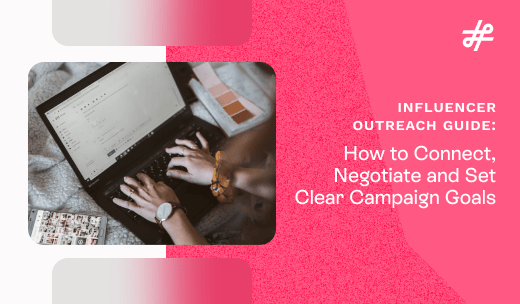
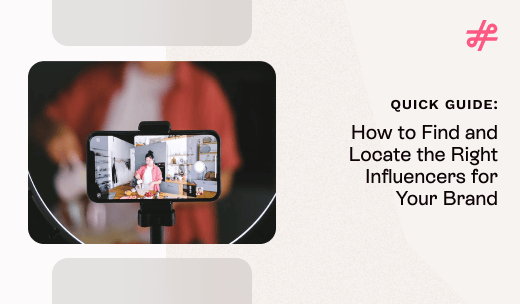



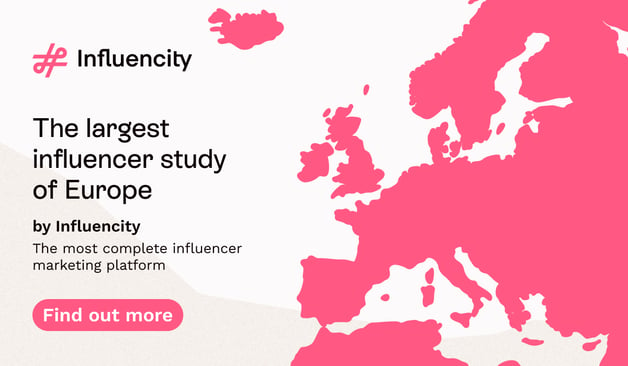

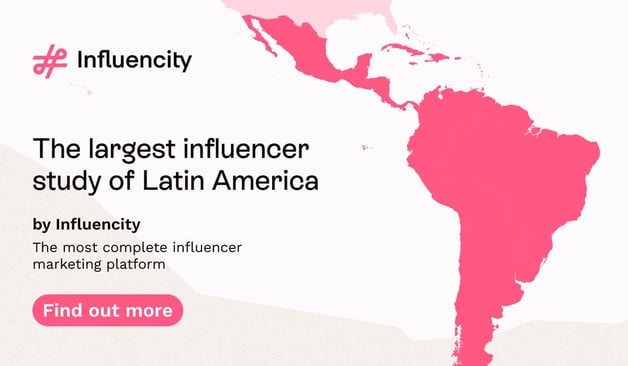


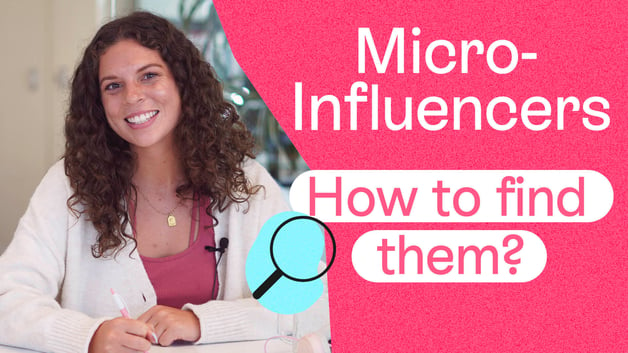


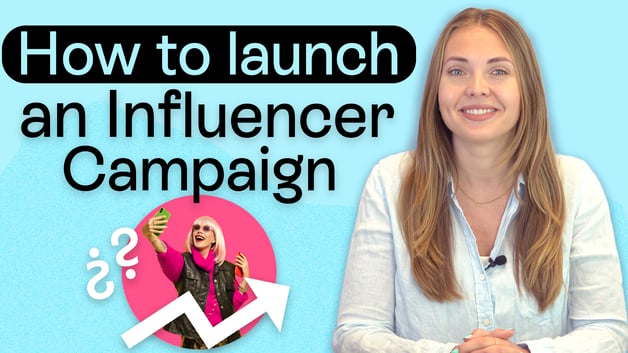



%20and%20How%20Can%20They%20Benefit%20Your%20Brand%20article.jpg?length=628&name=What%20Are%20Key%20Opinion%20Leaders%20(KOL)%20and%20How%20Can%20They%20Benefit%20Your%20Brand%20article.jpg)
